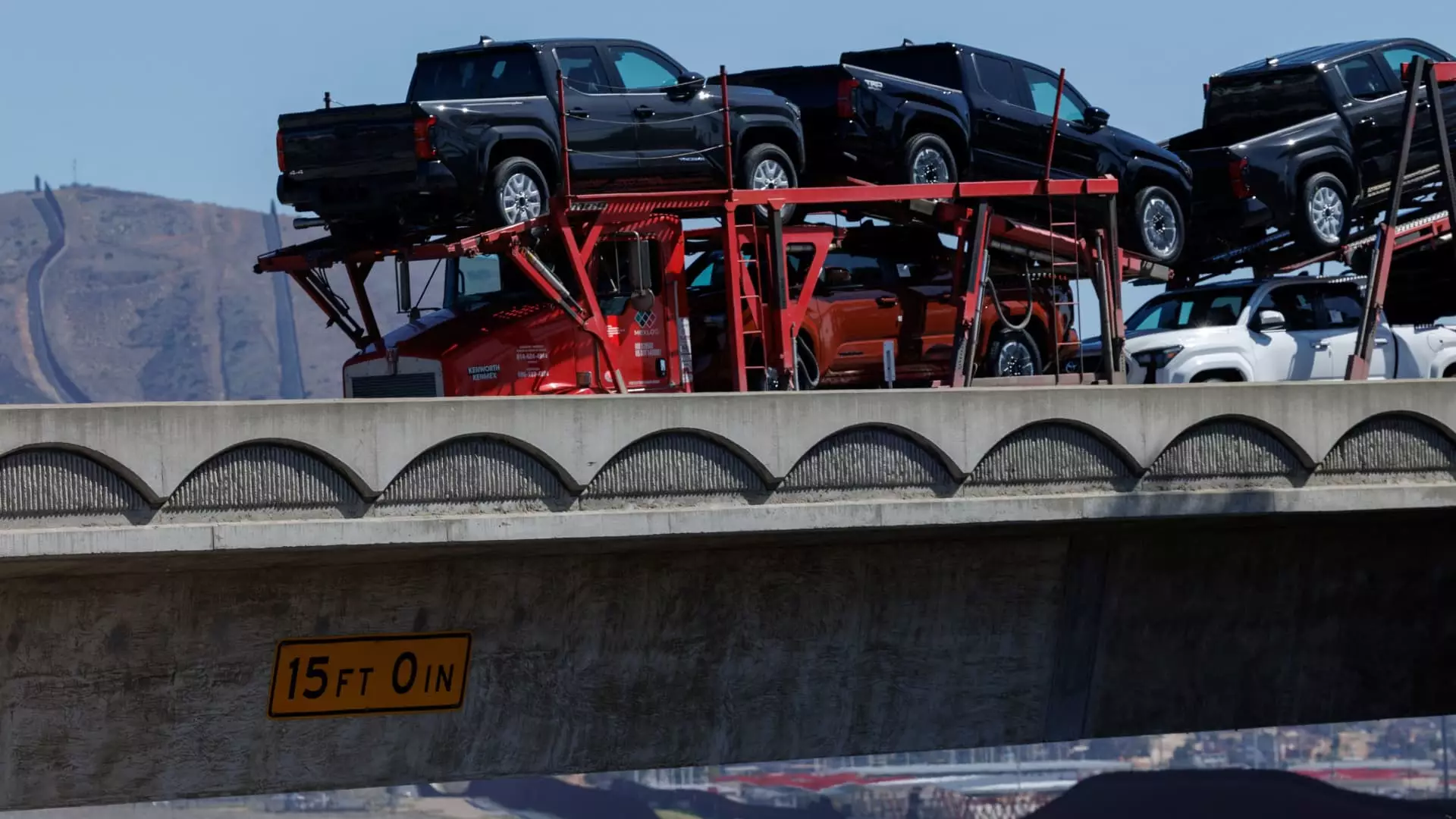In yet another controversial move, former President Donald Trump announced a staggering 25% tariff on all automobiles not manufactured in the United States, scheduled to take effect on April 3 for vehicles and May 3 for parts. This decision has undoubtedly sent shockwaves throughout the auto industry, prompting immediate reactions from major players, analysts, and labor unions alike. Such sweeping economic policies are reminiscent of a bygone era of protectionism. The outcome could be detrimental not only to the auto manufacturers but also to the consumers who will bear the brunt of these tariffs.
The march toward a tariff-laden automotive environment raises serious questions about the operational integrity of automakers and the overall economic landscape. First, it disrupts established supply chains that have meticulously evolved over decades. With data indicating that a single vehicle contains upwards of 20,000 components, tariffs on parts primarily sourced from regions like Mexico and Canada could lead to significant offerings—potentially driving car prices up by as much as $15,000 for imported models, as Goldman Sachs warns. Such increases would inevitably make vehicles less affordable for average consumers, disproportionately impacting lower- and middle-class families who rely on affordable transportation.
The Unequal Effects on Automakers
The stock market’s immediate response to Trump’s tariff announcement was telling. Shares of General Motors dipped more than 7%, while Ford and Stellantis also suffered losses, signaling investor concerns over the potential financial fallout. While companies like Tesla appeared relatively unscathed, it remains to be seen whether they too will be insulated from repercussions in the long run due to their unique operational structures. Analysts from Deutsche Bank pointed out that GM’s considerable dependence on Mexican manufacturing puts them in a particularly vulnerable position.
Trump’s proclamation that vehicles assembled within U.S. borders would be spared from tariffs presents an inherent paradox. By favoring domestic auto production, the policy seems well-intended at the outset but fails to acknowledge the intricate web of globalization that has defined automotive manufacturing for decades. Businesses that have optimized their supply chains by leveraging cost-effective labor and materials worldwide may find themselves scrambling to adapt—if they can adapt at all.
A Double-Edged Sword: The Union Perspective
The United Auto Workers (UAW) welcomed the move, heralding it as a turning point for blue-collar workers. UAW President Shawn Fain proclaimed that this could catalyze a revival in American auto jobs. But this is misleadingly simplistic and severs critical economic truths. While it’s commendable to prioritize domestic industrial growth, one must ask: at what cost? If companies are forced to mitigate costs through layoffs or reduced investment in innovation because of tariff-induced price hikes, the supposed benefits of job creation could quickly vanish.
Although the sentiment may resonate positively among union members, it overlooks the very real danger of inflating consumer prices for vehicles. Even former Missouri Governor Matt Blunt of the American Automotive Policy Council cautioned against unintended consequences, emphasizing that tariff policies should not exacerbate consumer costs or undermine market competitiveness.
The Broader Economic Consequences
The temptation to embrace protectionist policies can often overshadow the broader implications, including potential trade wars or retaliatory measures from other countries. If the U.S. initiates tariffs, it opens the door for other nations to impose similar or even higher tariffs on American goods. The risk here is not just an isolated disruption within the automotive sector; it could set off a domino effect throughout various industries that depend on cross-border trade.
Moreover, the reality is stark: vehicles are no longer purely manufactured in isolated silos. They are global products, with parts traveling through multiple countries before reaching the assembly line. Disrupting this flow threatens not just the automakers’ profit margins but also risks stunting innovation, which has flourished in a more interconnected global economy.
In the long run, Trump’s decision can be seen less as a catalyst for revitalization and more indeed as a ticking time bomb for both consumers and companies within one of America’s most vital sectors. The aspirations for job security should not cloud the judgement of sound economic practices; and consumers should be wary that the push for protectionism may lead them down a significantly costly road.

